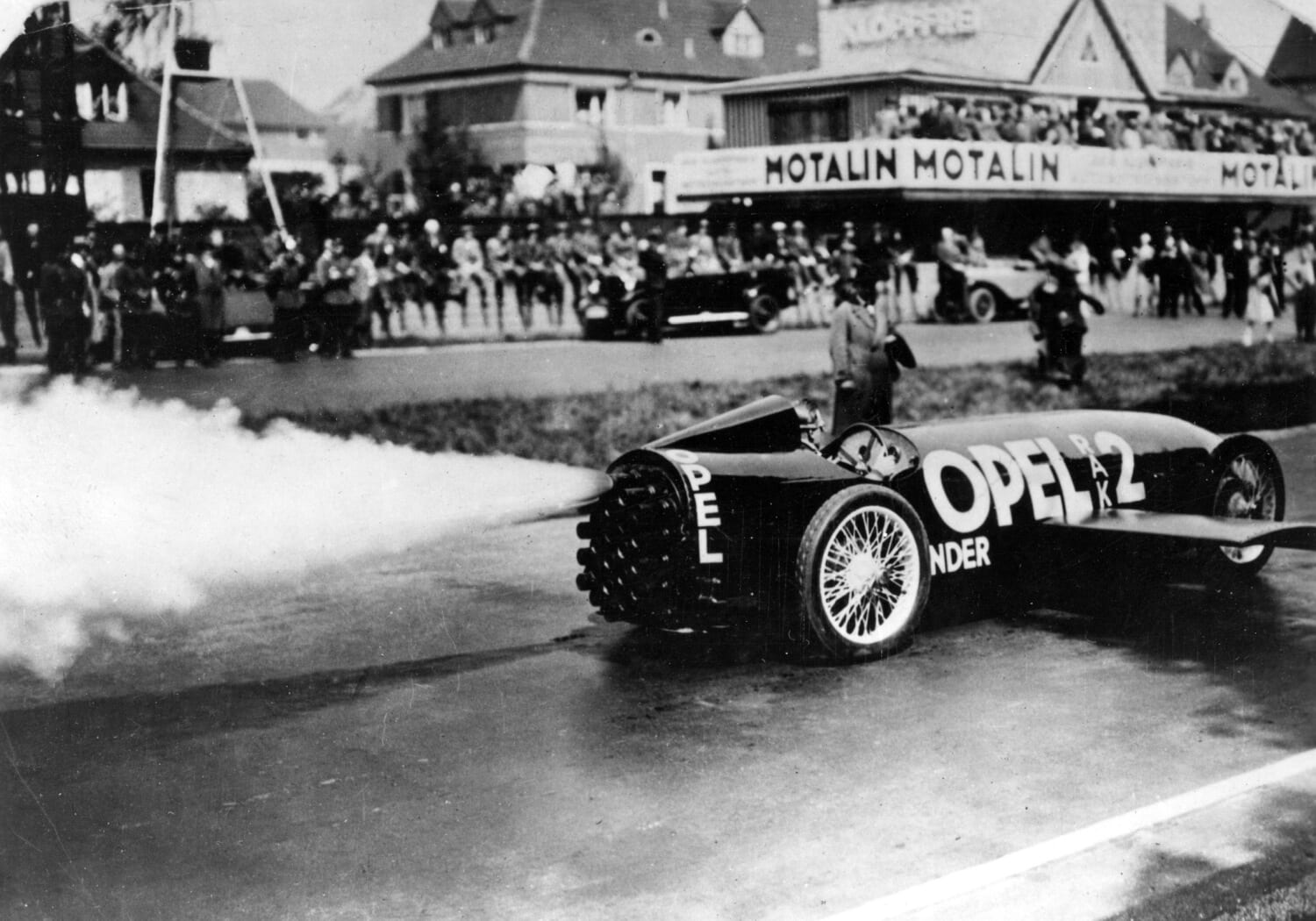Opel: Record drive 90 years ago (with video)
238 KM/H ON THE AVUS On May 23, 1928, Fritz von Opel set a new speed record with the RAK 2 on the Berlin Avus. The futuristic car had no engine but a rocket propulsion system. Until the Great Depression, Opel realized more records (see video!). It was 10 o'clock in the morning on that May 23, 90 years ago, when [...]

It was 10 o'clock in the morning on that May 23, 90 years ago, when Fritz von Opel ignited 24 powder rockets in the rear of his RAK 2. Afterwards, the 29-year-old grandson of company founder Adam Opel set a new speed record.
In doing so, it proved to a broad public that rocket propulsion is both powerful and controllable. Opel ushered in the rocket age with the spectacular RAK 2 in front of running cameras - the cornerstone of manned space flight.

Pioneers of rocket research
The history of the Opel RAK 2 goes back to the fall of 1927. After a meeting with the Austrian publicist and astronomer Max Valier, Fritz von Opel decided to take an active part in his rocket research project.
The racing driver, entrepreneur and graduate engineer brought not only his own commitment but also the innovative and financial power of the renowned Opel company to the collaboration.
The collaboration between Valier, Sander and von Opel bore its first fruits as early as March 1928. The first rocket-powered prototypes were launched on the Opel test track in Rüsselsheim in camera.
On April 11, the Opel RAK 1 with Opel engineer and racing driver Kurt Volkhart at the wheel reached 100 km/h within eight seconds. The basis of this car, which was already equipped with small lateral wings, was an Opel 4/12 HP. For its propulsion, twelve Sander rockets with around 40 kg of explosives were mounted in the rear.

Groundbreaking performance on the Avus
The Opel RAK 2 was designed specifically for the Avus record run on the chassis of an Opel 10/40 hp and represented a further development of the RAK 1 in several respects. It was longer (488 cm), aerodynamically refined and featured larger wings.
Propulsion was provided by 24 solid-fuel rockets, which together developed six tons of thrust. The gradual electric ignition of the charges by a pedal in the footwell was retained. It did not have an engine or transmission.
Fritz von Opel immediately nominated himself as the pilot of the 560 kg light rocket on wheels. He planned his groundbreaking appearance in Berlin carefully, both technically and organizationally. Around 3,000 people, journalists, celebrities, athletes and politicians were invited.

After just under three minutes, it was all over. The RAK 2 reached 238 km/h - "Rocket Fritz" became a celebrity overnight. From now on, the Opel brand was regarded as the most progressive and innovative car manufacturer.
End due to world economic crisis
Inspired by the great success in Berlin, Fritz von Opel and Friedrich Sander continue their experiments. With the Opel RAK 3 rocket trolley, they set a world speed record for rail vehicles of 256 km/h in Burgwedel on June 23, 1928.
After attempts with a motorcycle, the legendary Opel Motoclub, they finally turned intensively to aviation. Thus, on September 30, 1929, in Frankfurt, the world's first public rocket flight succeeded with the high-wing Opel-Sander RAK 1.
Shortly thereafter, however, the rocket tests at Opel were terminated under the impact of the world economic crisis and development capacities were fully concentrated on vehicle development.
However, Opel's innovative spirit and technical expertise remain its hallmarks to this day. The research and development of new drive technologies is more than ever one of the company's primary goals.









